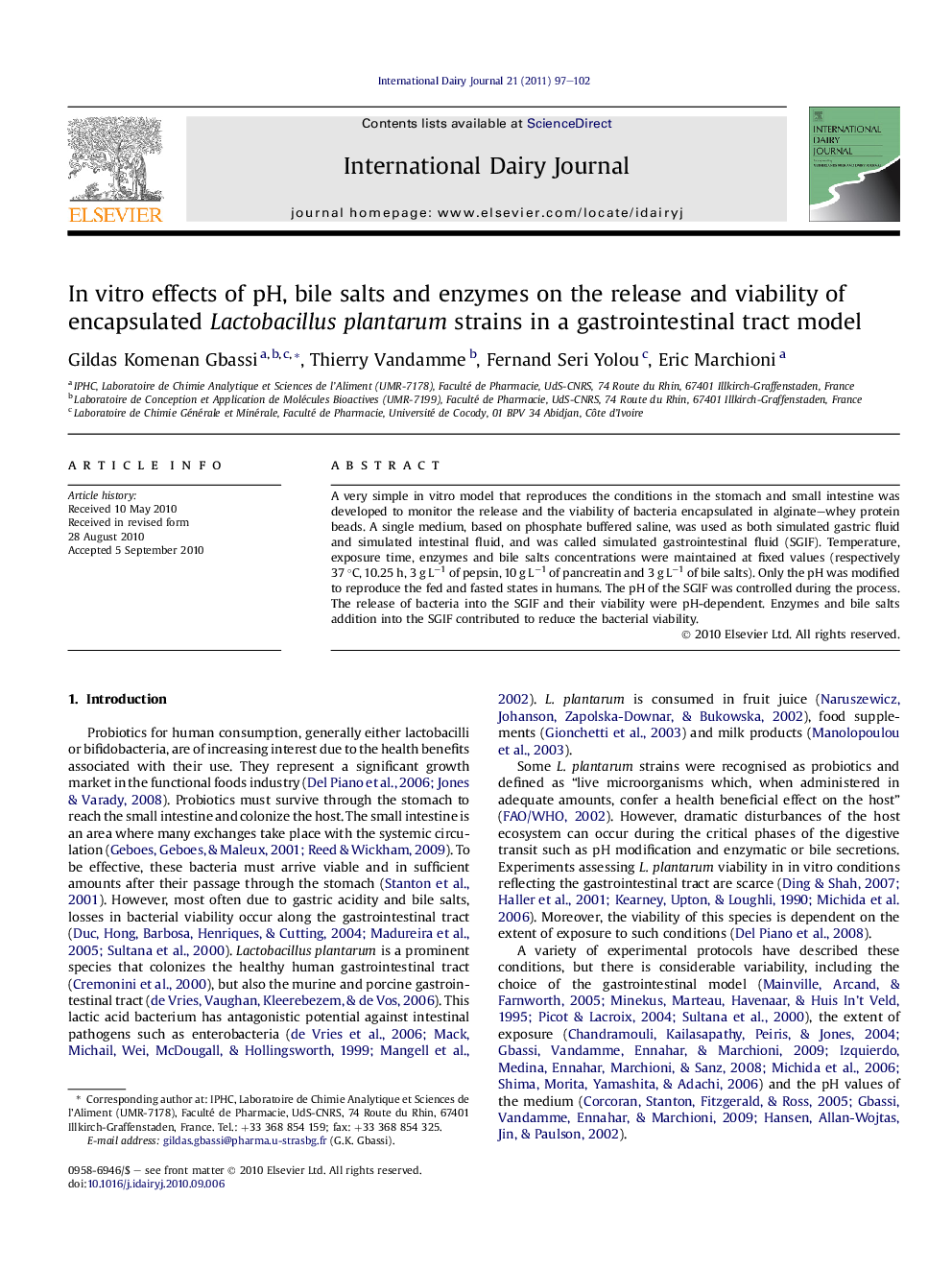| Article ID | Journal | Published Year | Pages | File Type |
|---|---|---|---|---|
| 10972343 | International Dairy Journal | 2011 | 6 Pages |
Abstract
A very simple in vitro model that reproduces the conditions in the stomach and small intestine was developed to monitor the release and the viability of bacteria encapsulated in alginate-whey protein beads. A single medium, based on phosphate buffered saline, was used as both simulated gastric fluid and simulated intestinal fluid, and was called simulated gastrointestinal fluid (SGIF). Temperature, exposure time, enzymes and bile salts concentrations were maintained at fixed values (respectively 37 °C, 10.25 h, 3 g Lâ1 of pepsin, 10 g Lâ1 of pancreatin and 3 g Lâ1 of bile salts). Only the pH was modified to reproduce the fed and fasted states in humans. The pH of the SGIF was controlled during the process. The release of bacteria into the SGIF and their viability were pH-dependent. Enzymes and bile salts addition into the SGIF contributed to reduce the bacterial viability.
Related Topics
Life Sciences
Agricultural and Biological Sciences
Food Science
Authors
Gildas Komenan Gbassi, Thierry Vandamme, Fernand Seri Yolou, Eric Marchioni,
